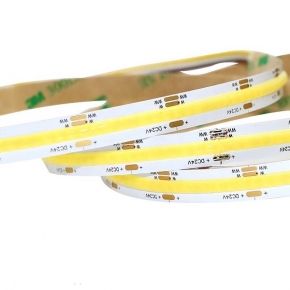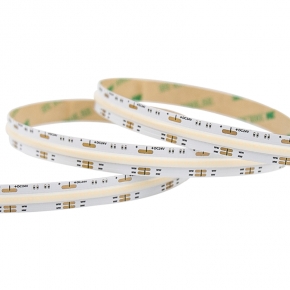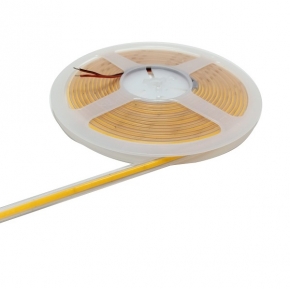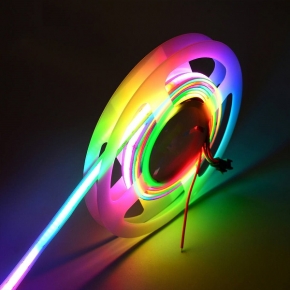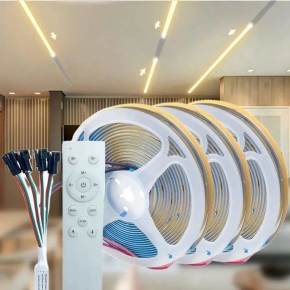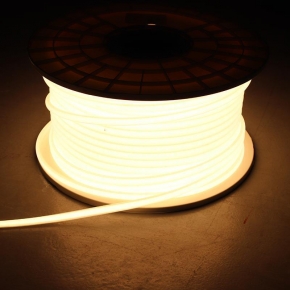LED Strip Lights vs. LED Rope Lights: A Professionals Guide
In the world of LED lighting, two prominent options frequently compete for attention: LED strip lights and LED rope lights. Both offer unique advantages and are suitable for different applications. As a professional in the lighting industry, it's essential to understand the distinctions between these two types of lighting to make informed decisions. This guide delves into the specifics of LED strip lights and LED rope lights, comparing their construction, functionality, and use cases.
Understanding LED Strip Lights
Construction
LED strip lights are composed of Surface-Mounted Diodes (SMD) LEDs mounted onto a flexible Printed Circuit Board (PCB). This construction allows them to be easily bent and cut to fit various shapes and sizes. They often come with a 3M adhesive backing for easy installation on various surfaces.
Functionality
· Brightness and Color: LED strip lights are available in a wide range of brightness levels and colors, including RGB for color-changing effects.
· Flexibility: Their flexibility makes them ideal for contouring around corners and edges, providing a seamless lighting solution.
· Durability: Properly sealed strip lights can be waterproof, making them suitable for indoor and outdoor use.
Use Cases
· Accent Lighting: Commonly used for under-cabinet lighting, cove lighting, and highlighting architectural features.
· Signage: Ideal for backlighting signs and channel letters.
· Home Automation: Integrates seamlessly with smart home systems for remote control and automation.
Exploring LED Rope Lights
Construction
LED rope lights, on the other hand, consist of LEDs encapsulated within a flexible plastic tube, usually PVC. This tube protects the LEDs and offers a more robust construction compared to strip lights.
Functionality
· Brightness and Color: LED rope lights typically have lower brightness levels and are available in a range of colors, including RGB options.
· Shape: Their round or square shape allows 360-degree light distribution, making them ideal for decorative purposes.
· Durability: With a higher IP rating, rope lights are well-suited for outdoor applications and harsh environments.
Use Cases
· Decorative Lighting: Popular for holiday lighting, outlining buildings, and creating ambient lighting in outdoor spaces.
· Safety Lighting: Used in pathways, stairways, and perimeters for safety and guidance.
· Landscape Lighting: Enhances garden features, tree trunks, and fences with soft, ambient lighting.
Comparing LED Strip Lights and LED Rope Lights
Key Differences
· Flexibility: LED strip lights are flat and highly flexible, whereas LED rope lights are tubular and less flexible.
· Brightness: Strip lights generally offer higher brightness levels, making them more suitable for task and accent lighting.
· Durability: Rope lights' protective tube offers better protection against physical damage, making them more durable in harsh environments.
· Installation: Strip lights can be adhered directly to surfaces, while rope lights require mounting clips or ties for installation.
Use Case Considerations
· Indoor vs. Outdoor: Strip lights are versatile for both indoor and outdoor use, whereas rope lights excel in outdoor decorative applications.
· Aesthetic: Strip lights provide a modern, sleek look, while rope lights offer a more classic, decorative aesthetic.
· Budget: Rope lights tend to be more cost-effective for decorative purposes due to their simpler construction.
Conclusion
When choosing between LED strip lights and LED rope lights, it's crucial to consider the specific requirements of your project. Whether you need high-brightness task lighting, sleek modern accent lighting, or decorative outdoor lighting, understanding the differences between these two options will help you make the right decision.
Ready to illuminate your projects with the perfect LED lighting solution? Contact LEDWAY Lighting today at sales2@ledwaylighting.com to explore our extensive range of LED strip lights and rope lights. Our team of lighting experts is eager to assist you in finding the perfect lighting solution for your needs.

